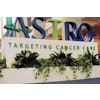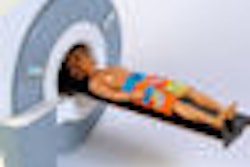CHICAGO - Researchers at Rush University Medical Center in Chicago and Argonne National Laboratory in Argonne, IL, are collaborating on a study to determine if an imaging technique used by NASA to inspect the space shuttle can be used to predict tissue damage often experienced by breast cancer patients treated with radiation therapy.
Preliminary data from a laboratory study showing that marked decreases in thermal effusivity of irradiated skin occur in advance of the development of high-grade skin reactions were presented at the American Society for Radiation Oncology (ASTRO) annual meeting being held this week in Chicago.
Approximately 80% of breast cancer patients undergoing radiation therapy experience some level of skin toxicity, typically occurring 10 to 14 days following the commencement of treatment. Because acute skin reactions differ in severity and are difficult to predict, the research team is trying to find a way to predict if a patient will get a skin reaction.
By identifying which patients may develop acute skin toxicity, it may be possible to offer preventive treatment, explained Dr. Katherine Griem, professor of radiation oncology at Rush.
Researchers at Rush and Argonne are conducting experiments to determine if 3D thermal tomography can detect the earliest changes that may trigger a skin reaction. The technology is currently being used as a noninvasive way to detect defects in composite materials.
Three-dimensional thermal tomography measures the thermal effusivity of skin tissue. In the study, a flash of light is used to heat the skin, and an infrared camera captures a series of images over time that display the skin's temperature. An algorithm developed by Argonne scientists calculates the temperature change of the skin and determines the skin's thermal effusivity, a measure of a material's ability to exchange heat with its surroundings.
The degree to which skin cools after being heated is related to its structure. Damaged skin cells have different effusivity values compared to that of healthy skin, according to James Chu, Ph.D., chairman of the section of medical physics. He said that if the earliest changes in damaged tissue can be identified, clinicians may be able to predict if a patient will develop acute skin toxicities.
The research team plans to perform additional studies to confirm the preliminary laboratory results and then test the technology's use in breast cancer patients.
Related Reading
Red wine reduces radiotherapy skin toxicity, August 14, 2009
Copyright © 2009 AuntMinnie.com



















